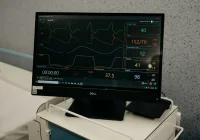Rapid integration of digital technologies is reshaping healthcare environments, changing routines and expectations for nurses across settings. Alongside opportunities created by artificial intelligence, robotics and electronic health records, nurses encounter software failures, usability gaps and a growing workload linked to mandatory digital systems. The concept of digital resilience clarifies how nurses adapt to these pressures and make sustained use of technology in practice. Framed as a positive power driven by intrinsic force, digital resilience is expressed through acquired behaviours and reinforced by sustained dynamic feedback. A structured concept analysis maps its attributes, antecedents and consequences for individuals and organisations, offering a foundation for tailored interventions, training and governance that align nursing practice with ongoing digital transformation.
Core Attributes of Digital Resilience
Digital resilience rests on four interconnected attributes that together describe how nurses respond to technological disruption and continuous change. Acquired behaviours are the observable practices that emerge as nurses confront digital shocks, moving from understanding and absorbing disruption, to responding through learning and resource mobilisation, to performing resilience by stabilising at an equal or improved state. This progression draws on prior knowledge, critical appraisal of risks in context and deliberate skill building that enables targeted problem solving with digital tools.
Positive power captures the favourable direction of outcomes achieved when resilience is active. In practice, it enables nurses to pursue recovery goals, sustain performance and extend benefits beyond individual tasks by building or engaging support networks. Through this lens, digital resilience functions as an engine for improved clinical decisions and service delivery where technology is integral to workflows.
Intrinsic force provides the underlying drive that allows these gains to occur. It is closely tied to self-efficacy and learning capacity, recognising that confidence in handling tasks and an ongoing commitment to update digital knowledge are prerequisites for resilient responses. As systems evolve, nurses who cultivate strong self-efficacy and learning habits are better positioned to interpret risk, adapt quickly and advocate effectively for safe, appropriate use of technology.
Must Read: Virtual Nursing Models in Noncritical Inpatient Care
Sustained dynamic feedback describes the temporal pattern of resilience. Rather than a static achievement, resilience fluctuates with internal states and external demands, strengthening through cycles of exposure, reflection and adjustment. Continuous feedback at cognitive and behavioural levels supports real-time calibration, embeds lessons into practice and reinforces the capability to face subsequent digital challenges.
Antecedents Across Technology, People and Organisations
Digital resilience does not arise in isolation, it is shaped by antecedents spanning technology, individuals and organisations. On the technology side, accelerated adoption of artificial intelligence, robotics and data-driven tools places nurses in contact with digital resources throughout care pathways. Algorithmic decision support, remote interactions and standardised documentation environments reconfigure tasks and expectations, and the experience of using such tools becomes a direct driver of adaptation.
Human-related antecedents include the bidirectional dialogue between nurses and technology, where frontline engagement, feedback and critical reasoning influence implementation quality. Digital literacy serves as a stepping stone, bridging skills and cognition so that access, interpretation and application of digital information can progress toward resilient behaviour. Personality traits matter as well. Confidence, critical thinking and other positive dispositions help maintain quality and personalised care even when technologies appear to challenge traditional roles or human touch.
Organisation-related antecedents reflect broader transformation under pressures such as the pandemic and the expansion of electronic records. Hospitals have shifted from offline coordination to remote and automated models of work, with growing reliance on algorithmic tools and structured language frameworks for nursing. These changes shape the practice environment externally while also activating intrinsic forces internally. Supportive structures, continuing education and aligned management systems create conditions in which digital resilience can develop and persist.
Consequences for Individuals, Technologies and Systems
Consequences of digital resilience unfold at the same three levels. For technologies, resilient nurses provide critical feedback on limitations, risks and biases within digital systems, helping refine tools and preserve trust in their use. Observational data and engagement with patients can complement algorithmic approaches, mitigating blind spots and supporting safer integration.
For individuals, the degree of resilience influences both capability and wellbeing. High resilience equips nurses with digital thinking, enabling the use of skills and information literacy to resolve clinical problems and improve care quality. Conversely, insufficient resilience heightens error risk, undermines adaptation to digital environments and may contribute to stress, burnout symptoms and reduced job satisfaction when challenges persist without adequate support.
At organisational level, digitally resilient nurses act as pioneers in the shift to technology-enabled care. Their leadership in frameworks and reporting guidelines supports standardisation and quality. Participation in digital nursing quality management can reduce burden, improve management efficiency and move practice from empirical routines to intelligent operations. Importantly, advancement remains anchored in the essential human touch of nursing, ensuring that innovation proceeds without eroding the values at the heart of care.
Digital resilience offers a coherent account of how clinical nurses navigate sustained technological change by combining intrinsic force, positive power, acquired behaviours and dynamic feedback. Its antecedents lie in omnipresent digital tools, human capacities and organisational structures, and its consequences span safer technologies, stronger professional capability and more efficient systems. Priorities now include cultivating self-efficacy and learning capacity, embedding supportive training across continuing education and recognising sociocultural influences on stress and adaptation. Clearer measurement remains a gap, with existing resilience scales not yet tailored to nurses’ digital contexts. By developing precise assessments and structured interventions, healthcare leaders can support nurses to internalise lessons from digital exposures, stabilise performance and carry forward innovation.
Source: BMC Nursing
Image Credit: Freepik
References:
Mo Y, Zhang H, Bai X et al. (2025) Digital resilience of clinical nurses: a concept analysis. BMC Nurs; 1231.










